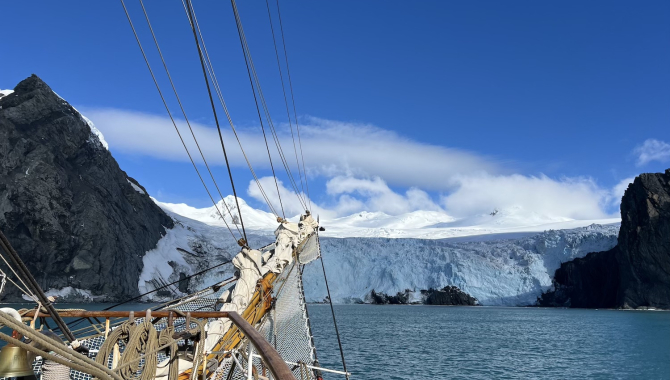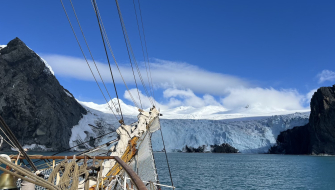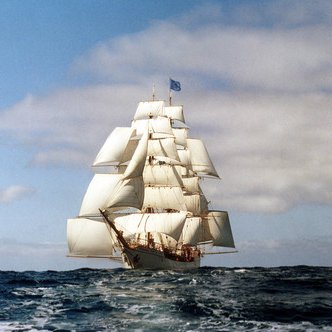Elephant Island

Elephant Island is as inhospitable a place as you can imagine. On our approach this morning I was impressed by its size. As we have become accustomed to here in Antarctica, enormous mountains of black stone stab up out of the ocean to heights of 2000m. Snow drapes heavily over them, and, where there are gaps between mountains, enormous glaciers force their way oceanward. The whole island seems a glacier, in fact, since the snow rises ever higher in the distance and each glacier is but an arm extending from one central mass of ice.
We dropped anchor at Point Wild, where Shackleton’s crew eked out a miserly existence for an incomprehensible four months before their miraculous rescue. Point Wild has a tiny closet of uneven (though roughly horizontal) ground on which they built a hut. Chinstrap penguins adorn the rocky arms leading out from shore, and leopard seals hunt among them. The cliffs facing the bay are sheer and appear ripped from the pages of fantasy.
I noticed that even the layer of snow atop the glacier was torn in pieces.
“It looks like a smashed porcelain plate,” I said to Marvin, my watch buddy.
“More like a cheesecake taken out of the oven too soon,” came his clever reply.
A deep rumbling caught our attention. On a distant mountain, what seemed like the entire slope was sliding into the ocean. A wide wedge of snow and ice crumbled, at least 200m in diameter and 100m high. Thick clouds of powder rose, and the boom of impact vibrated through the timbers of the ship. Waves rippled out toward us, carrying icy fragments with them.
Inhospitable and incredible.

